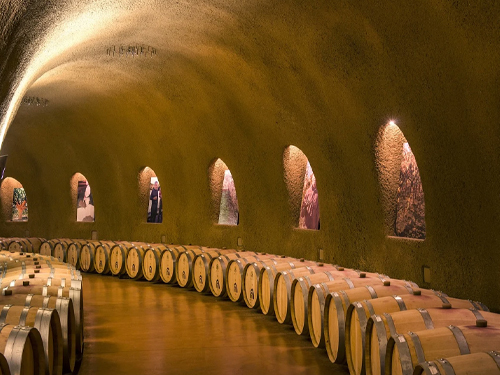Rédigé le 17/02/2022
Tout savoir sur les tanins

Lorsque l'on entend parler de vin en règle général, il y a un terme qui revient souvent "les tanins". En effet, il n'est pas rare quand on demande une bouteille chez un caviste ou dans un restaurant que le spécialiste nous parle de tanins. Mais qu'est-ce que cela veut dire précisément ?
Nous allons tout vous expliquer aujourd'hui afin que cela n'ait plus aucun secret pour vous.
Il faut dire qu'il y a pléthore de demi-vérités concernant les tanins. On peut entendre des phrases comme : “Les tanins viennent du bois de la barrique”, "ils ont le goût de noisette", "les tanins donnent la couleur au vin rouge" ou encore "les tanins apportent de l'amertume".
Pour répondre à tout cela, il est important de revenir à la base : d'où viennent-ils ?
Ce sont des molécules de type polyphénol que l'on trouve dans tous les végétaux puisqu'ils les protègent, comme des sortes de toxines.
Ils viennent de deux parties :
- Le raisin lui-même, dans la peau, les pépins et la partie ligneuse de la grappe
- Le bois des tonneaux dans lequel le vin est conservé
Et effectivement, les tanins ont un goût et ce dernier peut être différent selon l'endroit d'où ils proviennent :
- S'ils viennent du raisin, les tanins seront plus amers. On peut retrouver des arômes végétaux comme le haricot vert frais, l'artichaut, ou encore le kaki.
- Ceux du bois amèneront un côté un peu plus noisette. Suivant le degré de chauffe du tonneau, les arômes peuvent également avoir des notes grillées ou torréfiées.
En plus du goût, les tanins peuvent laisser une véritable sensation en bouche que l'on appelle l'astringence. Cette dernière n'est pas toujours très agréable puisqu'elle donne un côté râpeux à la langue avec une sensation d'assèchement.
Mais pourquoi les tanins ne sont pas enlevés ? Et bien tout simplement parce qu'ils donnent une texture, une ossature au vin. Ils sont également facteur de conservation car ce sont des antioxydants et ont également un effet antiseptique sur certaines bactéries.
Et si vous souhaitez en parler à table, voici quelques astuces pour avoir l'air d'un expert :
- Une fois le vin en bouche, il faudra reconnaître la force tannique : pas de tanins, peu asséchant, beaucoup de tanins, sensation râpeuse.
- La qualité des tanins, à savoir la finesse du grain. À l'instar du papier de verre, on retrouvera plusieurs grains, le fin, le serré, le grossier.
- Pour les décrire, voici quelques adjectifs utilisés pour en parler au mieux : âpre, rude, astringent, rugueux, rustique, rêche, râpeux…














